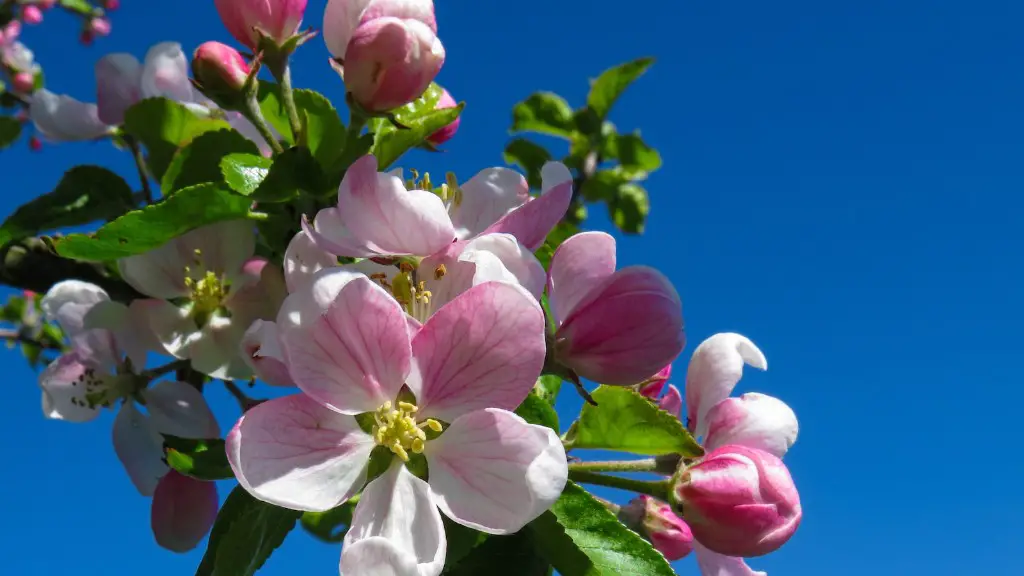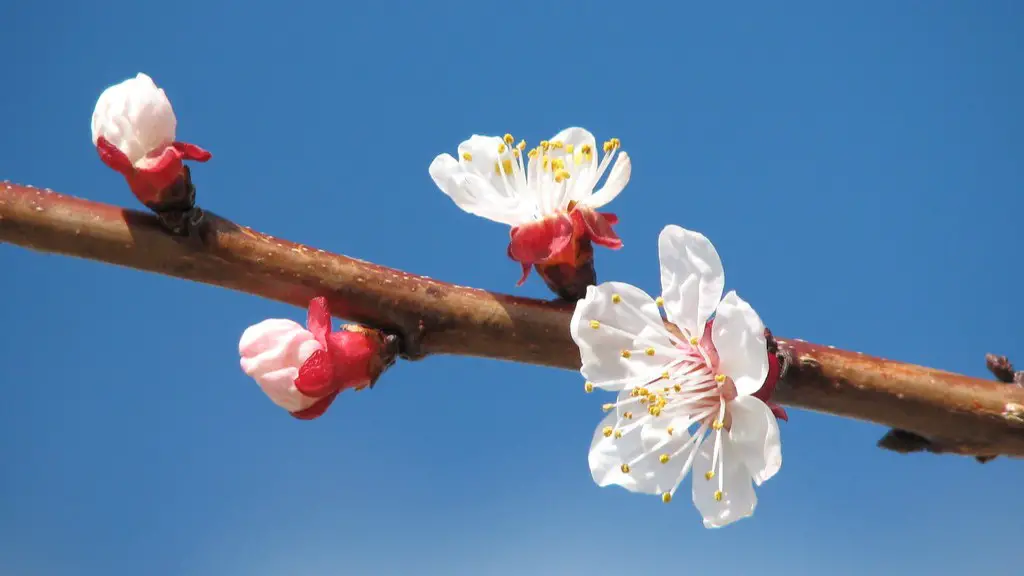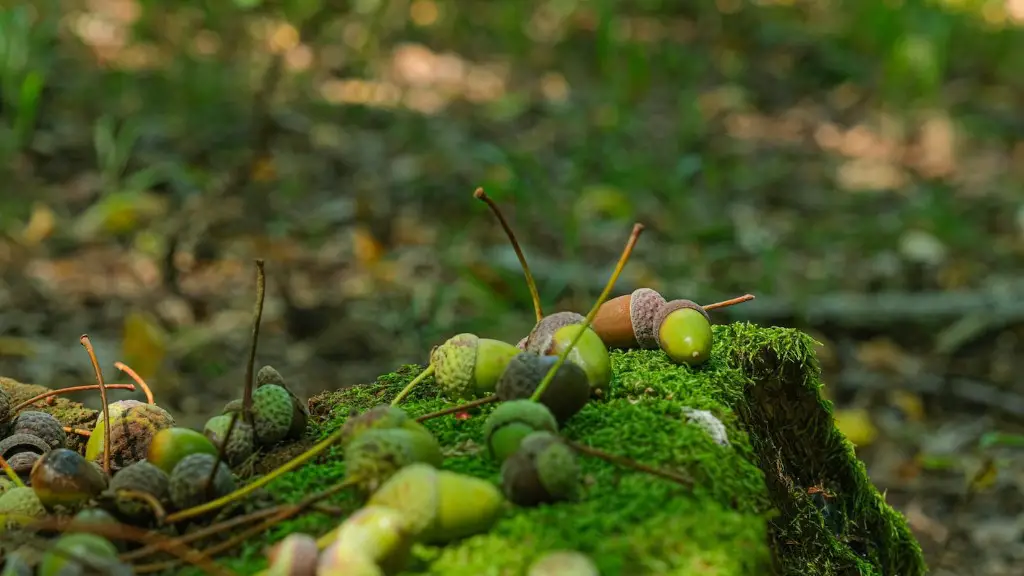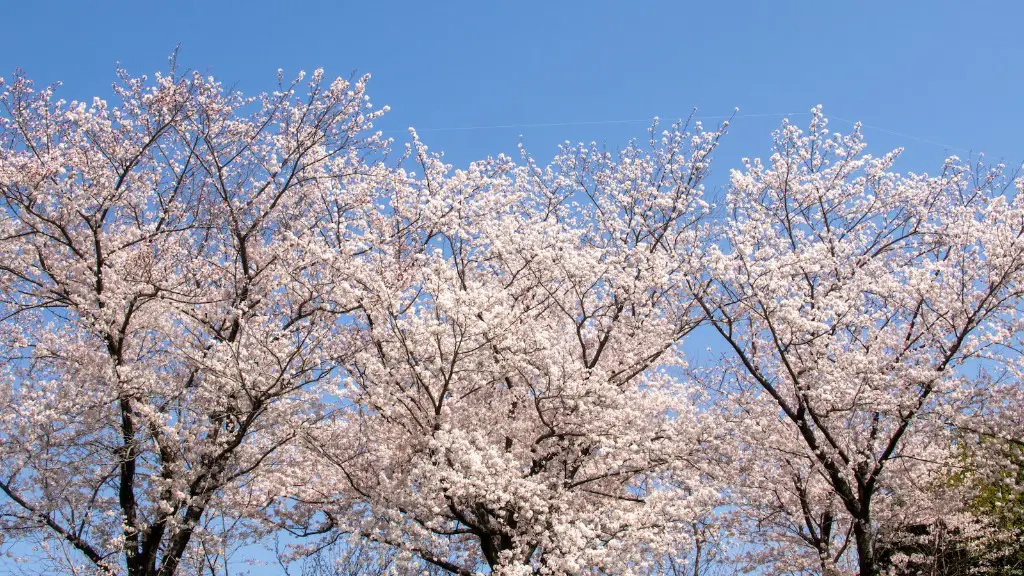Apple trees require regular pruning for health and aesthetic reasons. If done correctly, pruning can make a remarkable difference in the health and appearance of the tree. Pruning should start in late winter or early spring, just before growth begins. Pruning can seem intimidating but it’s actually not a difficult task. Here’s how to prune your apple tree.
First, you’ll need to identify which branches should be pruned. Look for any that are dead, diseased, or severely damaged. Selecting the right branches will allow new, healthy growth and keep pests and diseases away. Don’t forget to check for crossing branches that may be rubbing against each other and rubbing against the trunk. Removing these will allow better air and light circulation.
Once you’ve selected the branches to be pruned, it’s time to start cutting. Start with the larger branches and work your way down slowly. Cut the branch with a pruning shear at the point where it merges with another branch or the trunk, at a 45-degree angle, to a one-inch diameter. Make sure to clean your pruning shear blades after each cut to avoid the spread of diseases. For branches thicker than one-inch diameter, use a pruning saw.
Always remember to cut just above a bud and make sure it faces outward. This will encourage outward-facing branches and create a better, more open structure. Be careful not to cut too much or too close to the trunk; this could kill the tree or leave it weakened and susceptible to disease. Finally, don’t forget to keep the central leader of the tree intact. That’s the main stem of the tree that should always remain straight and unbranched.
Apple trees should never be overpruned. It can stunt the growth and affect the tree’s overall health. Always make sure to leave at least two-thirds of the previous season’s growth intact. If you’re unsure, it’s best to start conservatively and remove less. The same holds true for thinning out the inner branches. Doing this will create more open spaces and airflow throughout the canopy, but too much could reduce the amount of fruit produced.
What Pruning Tools Do I Need?
When it comes to pruning your apple tree, the right set of tools is essential. Start with a pair of top-quality pruning shears. Look for ones with a curved-tip blade, which will help reach those hard-to-reach branches. You’ll also need to have a folding pruning saw on hand for thick branches.Having a pair of lopping shears is also a good idea if you have really big branches.
In addition to the tools mentioned above, it’s important to have a pair of pruning gloves, a cleaning rag, and a ladder if you need to reach higher branches. All of these tools will ensure that your pruning job is safe, effective, and efficient.
And when pruning is done, it’s always a good idea to spray a fungicide or horticultural oil to protect the tree from disease and pests. You may want to consider investing in a tree guard as well,. This will provide an extra layer of protection for your tree.
What Is the Best Time to Prune an Apple Tree?
The best time to prune an apple tree is when the tree is in its dormant phase, usually during late winter or early spring before new growth begins. Pruning in this time frame will help reduce the spread of pests and diseases and promote healthy new growth.
Of course, there are exceptions. If you need to remove dead, diseased, or damaged branches, it’s best to do so right away. This will prevent the spread of diseases or damage to other branches and keep your tree healthy. But in most cases, late winter or early spring is the best time to prune an apple tree.
Are There Any Other Pruning Tips?
Yes! When pruning apple trees, keep in mind the two-thirds rule. Don’t prune more than two-thirds of the previous season’s growth or the tree will be weakened and susceptible to disease. And when you’re done pruning, remember to clean your pruning shears and tools to avoid the spread of pests and diseases.
Also, always make sure to cut just above a bud and ensure it is facing outward. This will ensure the new branches will grow outward instead of inward and create a better, more open structure. This will also allow more air and light circulation.
And finally, don’t forget to leave the central leader and main stem of your apple tree intact. This will help create a healthy, balanced structure and prevent the tree from being stunted.
What Are the Benefits Of Pruning?
Pruning your apple tree has numerous benefits. It helps improve the aesthetics of the tree, encourages outward-facing branches and growth, and creates better air and light circulation. It also helps to reduce the spread of pests and diseases, and ensure that the tree remains healthy and strong for many years.
Pruning can also help to increase fruit production. By thinning out the inner branches and increasing the open space, more sunlight can reach the fruit and help it to develop. So by pruning your tree, you can not only make a difference in its appearance and health, but also in its productivity.
What Are The Dangers Of Pruning?
Although pruning has many benefits, there are a few potential dangers to consider. Pruning too much or too close to the trunk could possibly kill the tree. Always make sure to leave at least two-thirds of the tree’s previous season’s growth intact. And make sure not to remove the central leader, or main stem, as this is essential for the tree’s health.
In addition, pruning at the wrong time of year can cause more harm than good. Pruning in late summer or early autumn could stimulate new growth which may be vulnerable to frost and winter damage. So it’s always best to wait until late winter or early spring to start pruning.
Finally, don’t forget to disinfect your pruning tools after each use. This will help to reduce the spread of pests and diseases and keep your apple tree healthy.




